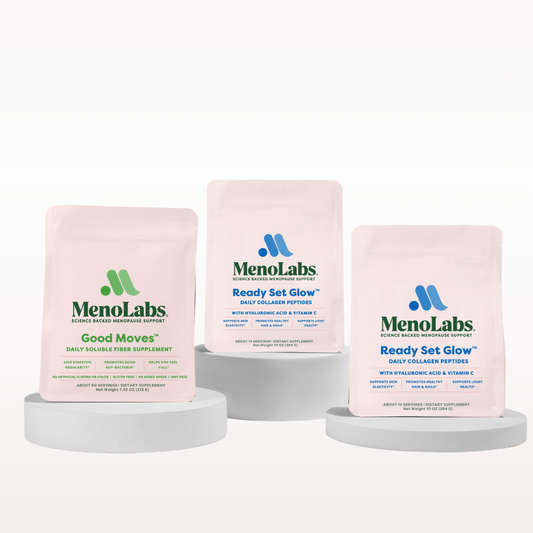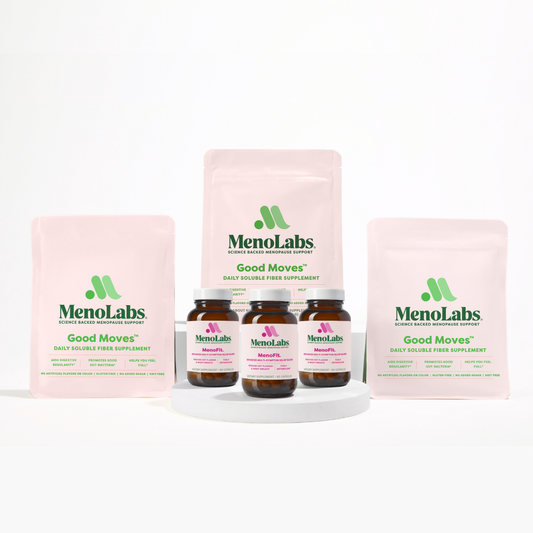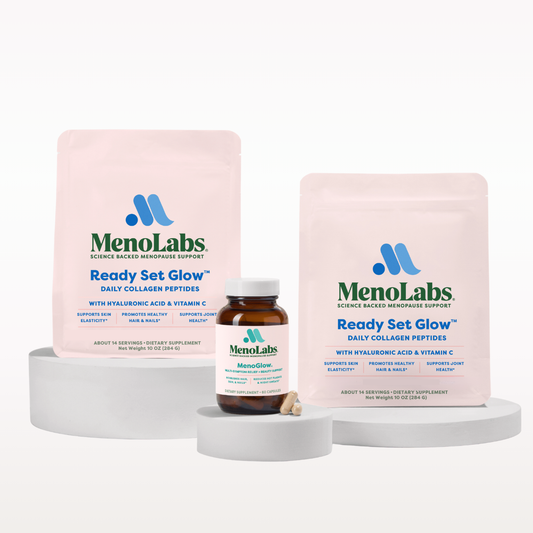Millions of women start their menopausal journey every year, and most of them don’t even realize it. That's because, before hitting menopause (a stage when you have gone 12 months without a menstrual period), women go through perimenopause, a stage which can last anywhere from 4 to 13 years, depending on the person.
Much like menopause, every person's perimenopause experience is unique. Symptoms and signs may vary — so much so that it can be difficult to know if you're actually in perimenopause.
There is no test a doctor can give you to tell if perimenopause has begun for you. However, there are a few symptoms that can usually let us know.
When Does Perimenopause Start?
Your body starts going through hormonal changes years before you enter menopause — estrogen levels can start fluctuating and dropping as early as 35. However, for the most part, the changes and symptoms experienced at this point tend to be mild. It isn’t until women reach their early to mid-40s that most start to experience more serious perimenopausal symptoms more frequently. This is when the sex hormones begin to change the most.
Not every person goes through perimenopause. Women who have experienced induced menopause — typically by undergoing partial and total hysterectomies — will usually go directly into early menopause, with no perimenopause experience.
What Are The Symptoms of Perimenopause?
If you're experiencing perimenopause, you might be dealing with a wide variety of symptoms, from the subtle to the intense, will some occurring often and others rarely. There's no single set of symptoms all women in perimenopause experience — everyone's biology is unique, and one symptom that you experience regularly might not impact another woman at all.
That said, there are some fairly common symptoms that the majority of perimenopausal women report experiencing at some point in this stage:
- Irregular periods
- Insomnia
- Hot flashes
- Irritability
- Mood swings
- Fatigue
- Breast tenderness
In addition to these better-known symptoms, there are other symptoms that can occur during perimenopause that women may not realize are connected to changes in their hormones.
These can include:
- Dry eyes
- Brittle hair and nails
- Dry skin
- Hair loss/thinning
- Difficulty concentrating
- Digestion problems
- Muscle tension
What Can You Do?
As you go through the menopausal transition, the impact of the loss of estrogen will likely be felt more intensely as you go on. So being proactive about your health and symptoms during perimenopause is important. And luckily, there are steps to take to lessen the impact.
Eat a balanced diet
Eating a balanced diet is crucial to helping your body obtain the nutrients it needs to regulate its many systems. Perimenopausal women, especially, need a variety of nutrients like protein, calcium, Vitamin D, and Vitamin K to help promote muscle and bone health. Antioxidant-rich foods can help women protect their immune and heart health. Staying hydrated can also help perimenopausal women better tackle certain symptoms like hot flashes, headaches, and even digestion problems.
Exercise regularly
Having a regular exercise routine can help alleviate some of your perimenopausal symptoms. It may also help you reduce insomnia and fall asleep more easily, strengthen muscles, and even help encourage bone tissue growth, which can lower the risk of developing serious osteoporosis in the future.
Related Products
Blend Besties Bundle
Fresh Start Bundle
4.7 / 5.0
(551) 551 total reviews






